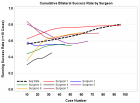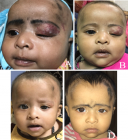Abstract
Research Article
COVID-19 New variant and air pollution relationship: how airborne mutagens agent can act on genoma viruses expression: Hypothesis of work
Luisetto M*, Naseer Almukthar, Gamal Abdul Hamid, Tarro G, Khaled Edbey, Nili BA, Ghulam Rasool Mashori, Ahmed Yesvi Rafa and Latyshev O Yu
Published: 16 February, 2021 | Volume 5 - Issue 1 | Pages: 022-031
Before actual COVID-19 pandemia coronavirus was not so dangerous like now.
In December 2019 - January 2020 in Wuhan first and then in other places this coronavirus was responsible of a first wave of severe pulmonitis responsible of many deaths.
Wuhan and other region involved first was high level air polluted and industrial area.
New COVID-19 variant in last part of 2020 and in first month of 2021 was responsible of great diffusion of this pandemic disease.
UK, South Africa and brasilian new variant show higher diffusion then the first wave of COVID-19.
Aim of this work is to analyze relationship with air pollution and the possibility that mutagen substantia inside of this microenvironment can produce new variant trough an genetic pressure process.
RNA viruses are normally subjected by natural mutation but some phenomena can contribute to accelerate this process and their airborne – aeresols microenvironment is relevant.
Some air pollutants are recognized as mutagen factors by literature.
Read Full Article HTML DOI: 10.29328/journal.ijcv.1001031 Cite this Article Read Full Article PDF
Keywords:
Air pollution; Environmental toxicology; COVID-19 new variant; Mutagen; Particulate matter; NO2; Benzo-a-pyrene; Cause-effect relationship; Direct or indirect actions
References
- Ducatti A, Vargas VMF. Mutagenic activity of airborne particulate matter as an indicative measure of atmospheric pollution. Mutat Res. 2003; 540: 67-77. PubMed: https://pubmed.ncbi.nlm.nih.gov/12972059/
- Erdinger L, Dürr M, Höpker KA. Correlations between mutagenic activity of organic extracts of airborne particulate matter, NOx and sulphur dioxide in southern Germany: results of a two-year study. Environ Sci Pollut Res Int. 2005; 12: 10-20. PubMed: https://pubmed.ncbi.nlm.nih.gov/15768736/
- Inoue H, Fukunaga A, Okubo S. Mutagenic effects of nitrogen dioxide combined with methylurea and ethylurea in Drosophila melanogaster. Mutat Res. 1981; 88: 281-290. PubMed: https://pubmed.ncbi.nlm.nih.gov/6789194/
- Fukino H, Mimura S, Inoue K, Yamane Y. Mutagenicity of airborne particles. Mutat Res. 1982; 102: 237-247. PubMed: https://pubmed.ncbi.nlm.nih.gov/6755233/
- Depayras S, Kondakova T, Heipieper HJ, Feuilloley MGJ, Orange N, et al. The Hidden Face of Nitrogen Oxides Species: From Toxic Effects to Potential Cure? Open access peer-reviewed chapter. 2018.
- Chang J, Tao J, Xu C, Li Y, Li N, et al. Pollution characteristics of ambient PM2.5–bound benzo[a]pyrene and its cancer risks in Beijing. Sci Total Environ. 209; 654: 735-741. PubMed: https://pubmed.ncbi.nlm.nih.gov/30448664/
- Remington KM, Bennett SE, Harris CM, Harris TM, Bebenek K. Highly mutagenic bypass synthesis by T7 RNA polymerase of site-specific benzo[a]pyrene diol epoxide-adducted template DNA. J Biol Chem. 1998; 273: 13170-1316. PubMed: https://pubmed.ncbi.nlm.nih.gov/9582358/
- Luisetto M. Deforestation, air pollution and Brasisliant covid-19 variant. Preprint Researchgate. 2021.
Figures:

Figure 1
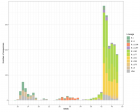
Figure 2
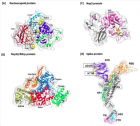
Figure 3

Figure 4

Figure 5

Figure 6

Figure 7
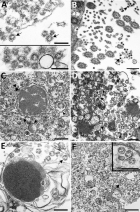
Figure 8
Similar Articles
-
COVID-19 New variant and air pollution relationship: how airborne mutagens agent can act on genoma viruses expression: Hypothesis of workLuisetto M*,Naseer Almukthar,Gamal Abdul Hamid,Tarro G,Khaled Edbey,Nili BA,Ghulam Rasool Mashori,Ahmed Yesvi Rafa,Latyshev O Yu. COVID-19 New variant and air pollution relationship: how airborne mutagens agent can act on genoma viruses expression: Hypothesis of work. . 2021 doi: 10.29328/journal.ijcv.1001031; 5: 022-031
Recently Viewed
-
Late discover of a traumatic cardiac injury: Case reportBenlafqih C,Bouhdadi H*,Bakkali A,Rhissassi J,Sayah R,Laaroussi M. Late discover of a traumatic cardiac injury: Case report. J Cardiol Cardiovasc Med. 2019: doi: 10.29328/journal.jccm.1001048; 4: 100-102
-
A two-phase sonographic study among women with infertility who first had normal sonographic findingsKalu Ochie*,Abraham John C. A two-phase sonographic study among women with infertility who first had normal sonographic findings. Clin J Obstet Gynecol. 2022: doi: 10.29328/journal.cjog.1001117; 5: 101-103
-
Sinonasal Myxoma Extending into the Orbit in a 4-Year Old: A Case PresentationJulian A Purrinos*, Ramzi Younis. Sinonasal Myxoma Extending into the Orbit in a 4-Year Old: A Case Presentation. Arch Case Rep. 2024: doi: 10.29328/journal.acr.1001099; 8: 075-077
-
Analysis of Psychological and Physiological Responses to Snoezelen Multisensory StimulationLucia Ludvigh Cintulova,Jerzy Rottermund,Zuzana Budayova. Analysis of Psychological and Physiological Responses to Snoezelen Multisensory Stimulation. J Neurosci Neurol Disord. 2024: doi: 10.29328/journal.jnnd.1001103; 8: 115-125
-
Feature Processing Methods: Recent Advances and Future TrendsShiying Bai,Lufeng Bai*. Feature Processing Methods: Recent Advances and Future Trends. J Clin Med Exp Images. 2025: doi: 10.29328/journal.jcmei.1001035; 9: 010-014
Most Viewed
-
Evaluation of Biostimulants Based on Recovered Protein Hydrolysates from Animal By-products as Plant Growth EnhancersH Pérez-Aguilar*, M Lacruz-Asaro, F Arán-Ais. Evaluation of Biostimulants Based on Recovered Protein Hydrolysates from Animal By-products as Plant Growth Enhancers. J Plant Sci Phytopathol. 2023 doi: 10.29328/journal.jpsp.1001104; 7: 042-047
-
Sinonasal Myxoma Extending into the Orbit in a 4-Year Old: A Case PresentationJulian A Purrinos*, Ramzi Younis. Sinonasal Myxoma Extending into the Orbit in a 4-Year Old: A Case Presentation. Arch Case Rep. 2024 doi: 10.29328/journal.acr.1001099; 8: 075-077
-
Feasibility study of magnetic sensing for detecting single-neuron action potentialsDenis Tonini,Kai Wu,Renata Saha,Jian-Ping Wang*. Feasibility study of magnetic sensing for detecting single-neuron action potentials. Ann Biomed Sci Eng. 2022 doi: 10.29328/journal.abse.1001018; 6: 019-029
-
Pediatric Dysgerminoma: Unveiling a Rare Ovarian TumorFaten Limaiem*, Khalil Saffar, Ahmed Halouani. Pediatric Dysgerminoma: Unveiling a Rare Ovarian Tumor. Arch Case Rep. 2024 doi: 10.29328/journal.acr.1001087; 8: 010-013
-
Physical activity can change the physiological and psychological circumstances during COVID-19 pandemic: A narrative reviewKhashayar Maroufi*. Physical activity can change the physiological and psychological circumstances during COVID-19 pandemic: A narrative review. J Sports Med Ther. 2021 doi: 10.29328/journal.jsmt.1001051; 6: 001-007

HSPI: We're glad you're here. Please click "create a new Query" if you are a new visitor to our website and need further information from us.
If you are already a member of our network and need to keep track of any developments regarding a question you have already submitted, click "take me to my Query."






